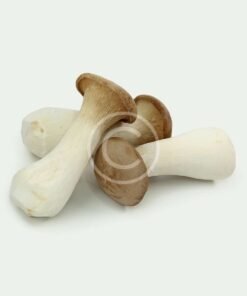Portabella Mushroom
The edible basidiomycete mushroom Agaricus bisporus is found in grasslands throughout Europe and North America. While immature, it has two color states: white and brown, all of which have different names, with additional names for the adult state.
This mushroom is also called as common mushroom, white mushroom, button mushroom, cultivated mushroom, table mushroom, and champignon mushroom when it is young and white (or simply champignon). It’s also known as Swiss brown mushroom, Roman brown mushroom, Italian brown mushroom, cremini/crimini mushroom, chestnut mushroom (not to be confused with Pholiota adiposa), and baby bella when it’s juvenile and brown.
Portobello mushrooms (often known simply as “portobellos”) are mature white button mushrooms that belong to the fungus family. Not only are portobellos inexpensive in calories and a terrific meat substitute in dishes, but they’re also high in phytochemicals like L-ergothioneine and conjugated linoleic acid (CLA), which have cancer-fighting and anti-aging characteristics. Mushrooms scavenge organic stuff since they are fungi, which means they grow by collecting nutrients from the ground and decomposing matter.for example, wood or even manure This causes them to become extremely nutrient-dense, and when consumed by humans, these nutrients aid in the elimination of toxins from the body and the scavenging of disease-causing free radicals.
Health Advantages
May Assist in Cancer Prevention
Antioxidants and natural anti-inflammatories are present.
Suitable as a Meat Substitute
B Vitamins are abundant in this food.
Copper and Selenium are provided.
Low in carbohydrates but high in fiber


